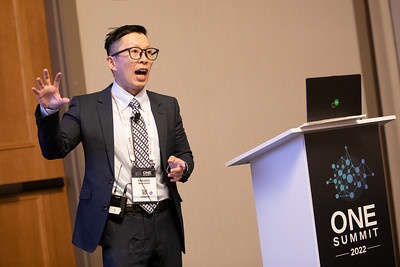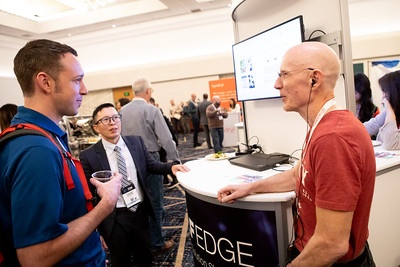...
ONE Summit 2022 - Akraino Blog
At the ONE Summit (ONES) in Seattle in November, the Linux Foundation Edge community (LF Edge) presented state-of-the-art edge computing in areas of Telco, Oil & Gas, Manufacturing, and Retail. The Akraino blueprint "Robot Architecture Based on SSES" was selected by the LF Edge conference showcase committee to exhibit in the Manufacturing category. This blueprint is architected by Fujitsu and focuses on two key areas in robotics:
manipulating elastic and non-uniform objects with variable shapes and surfaces, under variable environmental conditions
safe and reliable robot-human interaction
Fujitsu and Signalogic personnel manned the Manufacturing kiosk and we're happy to report the exhibit was well-attended and effective. While we didn't see a pre-pandemic level of attendance (maybe half compared to 2019), that was made up for by enthusiasm and energy of attendees and exhibitors. It was a great feeling driving into Seattle on a cold but sunny day, negotiating the city's notoriously gnarly freeway design and traffic, arriving at the Sheraton, and then focusing 100% on presenting LF Edge, Akraino, and robotics to technical and business developers ! We can confidently report that in-person conferences are back and thriving.
As it turns out, the conference format was effective for promoting robotics as well as Akraino and LF Edge. As one example, our blueprint's project team leader, Fukano Haruhisa-san from Fujitsu's development labs, gave a technical presentation in the early afternoon of Day 1. Then later in the day, while dinner was served near the exhibit area, attendees who had attended Fukano-san's presentation zero'd in on our kiosk. They had been busy juggling their conference schedule, but now they had questions and were ready to dig deeper. That was also our chance to promote LF Edge and Akraino. Naturally we took full advantage 😀
Customer discussions at the kiosk were both wide ranging and in-depth. Of particular concern is how to merge requirements for compute intensive onboard processing (i.e. on the robot) with cloud processing. There is a mix of needs, including mapping, handling unusual and as-yet-unknown objects, failure prediction, real-time speech recognition, background noise removal, natural language processing, and more. Some needs can be met in the cloud, and some demand "never down, never out" capability. The former can be met with containerization, Kubernetes, and other CICD and automation tools, while the latter requires intensive onboard computation. Of course, any onboard computation faces severe limitations in size (form-factor), weight, and available power. It's a fascinating problem in edge computing and engineering tradeoffs.
Fukano-san presenting SSES robot
architecture at ONE Summit
...
Lots of tasty treats 😋
At the Manufacturing kiosk with a robotics customer !
...

